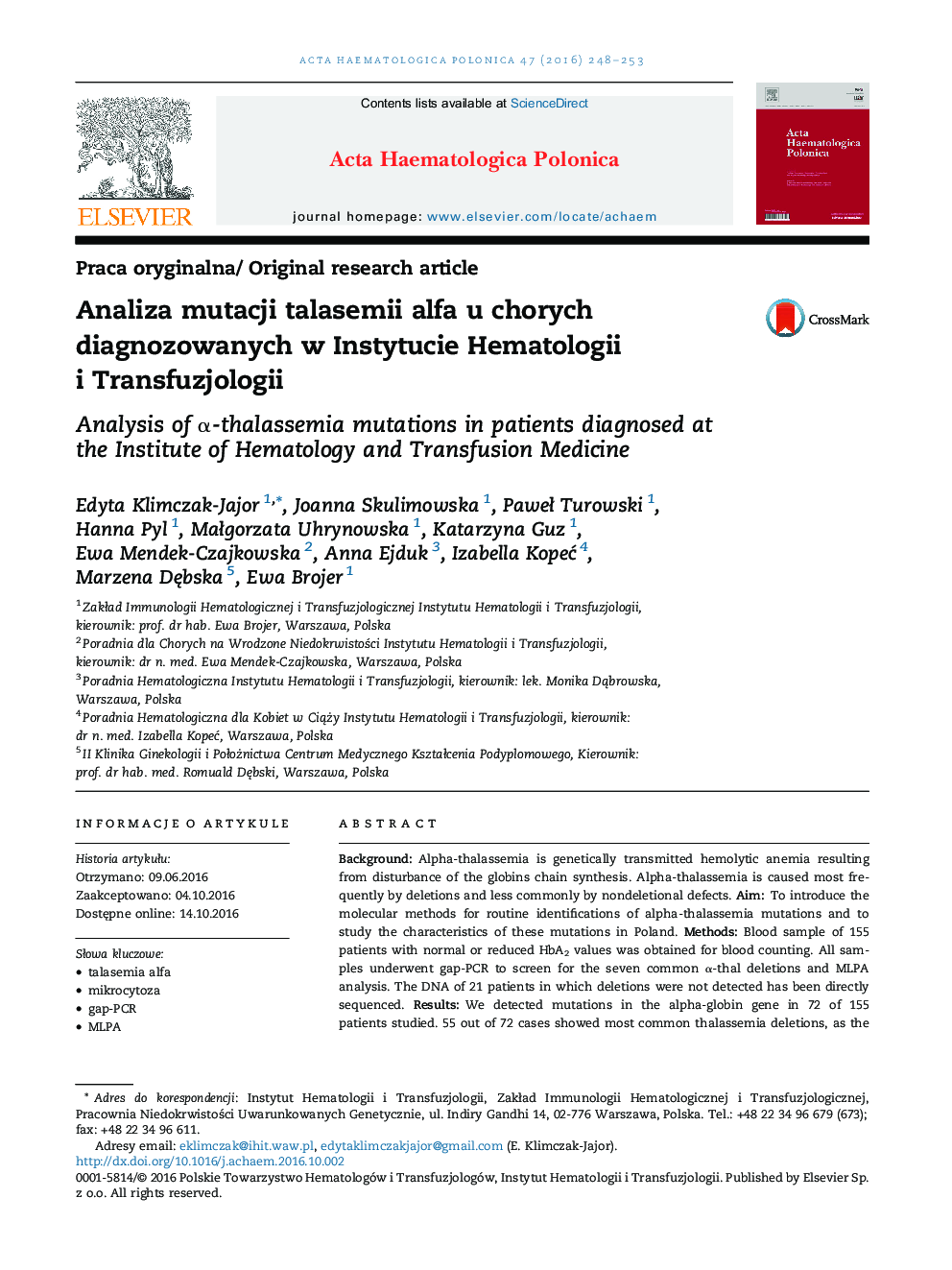| Article ID | Journal | Published Year | Pages | File Type |
|---|---|---|---|---|
| 5663810 | Acta Haematologica Polonica | 2016 | 6 Pages |
BackgroundAlpha-thalassemia is genetically transmitted hemolytic anemia resulting from disturbance of the globins chain synthesis. Alpha-thalassemia is caused most frequently by deletions and less commonly by nondeletional defects.AimTo introduce the molecular methods for routine identifications of alpha-thalassemia mutations and to study the characteristics of these mutations in Poland.MethodsBlood sample of 155 patients with normal or reduced HbA2 values was obtained for blood counting. All samples underwent gap-PCR to screen for the seven common α-thal deletions and MLPA analysis. The DNA of 21 patients in which deletions were not detected has been directly sequenced.ResultsWe detected mutations in the alpha-globin gene in 72 of 155 patients studied. 55 out of 72 cases showed most common thalassemia deletions, as the following: a single gene deletion (α3.7 and α4.2) and both genes deletion (FIL, SEA, MED I, and α20.5). Owing to the use of MLPA technique, we found nontypical deletions in another 12 patients and multiplication of the alpha-globin genes in further 4 cases. We also identified a patient with a point mutation HBA2: c.300 + 2T>A by DNA sequencing.ConclusionsMolecular analysis of the alpha-globin cluster is required for a correct diagnosis in patients with normal or reduced level of HbA2.The results of the study show that due to the progressive migration of the population and globalization, thalassemia must be included in the differential diagnosis of anemia in Poland.
